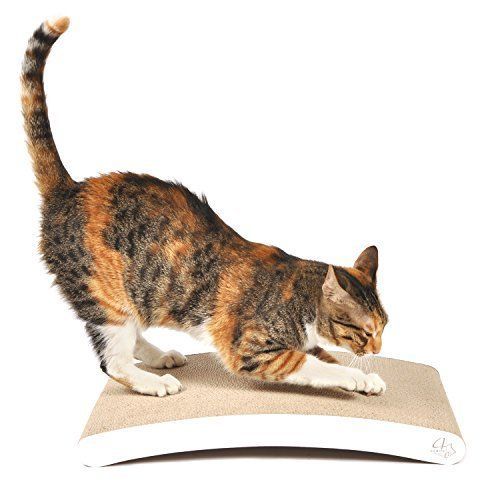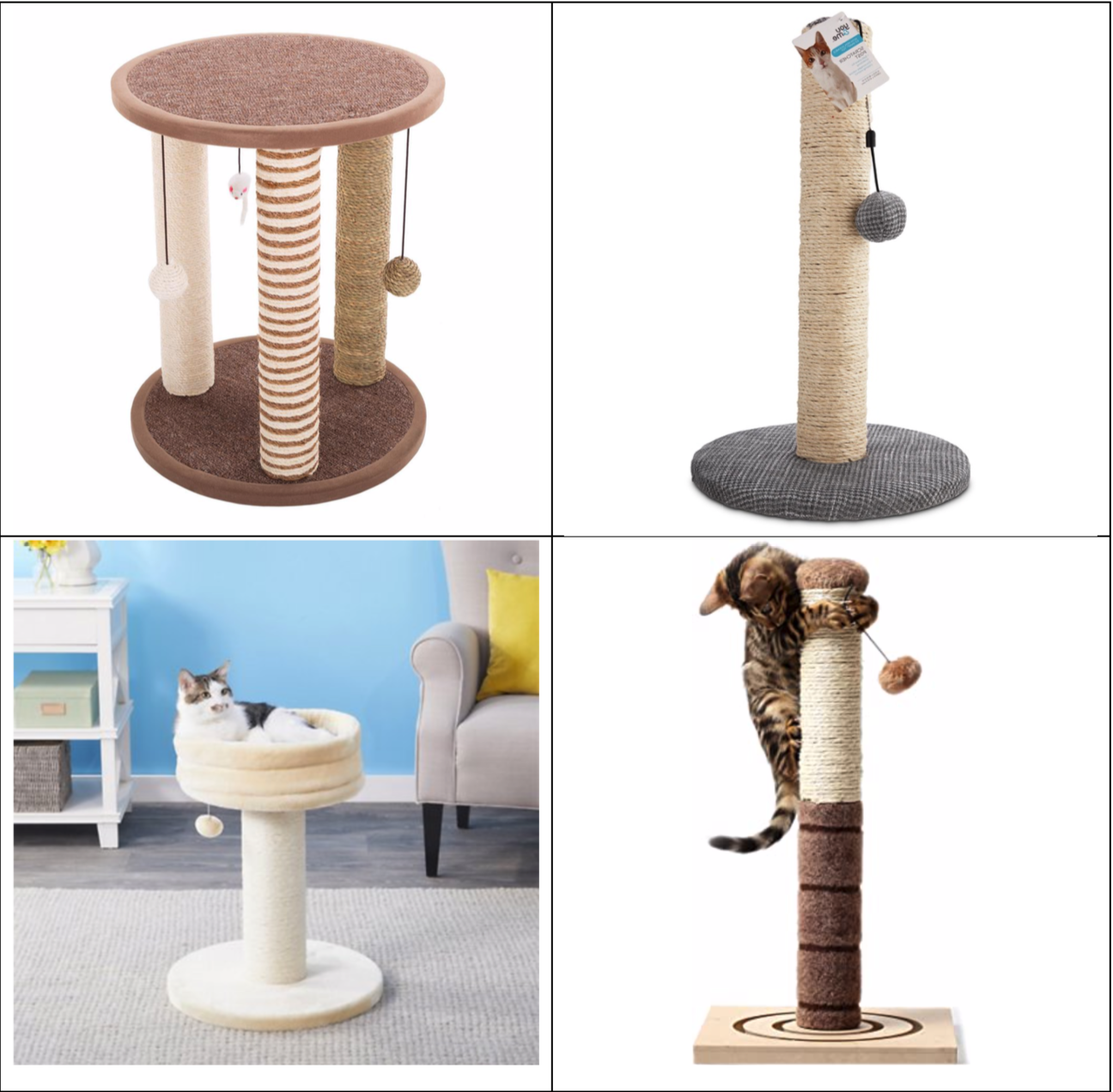Why do cats scratch?
Cats scratch for a variety of reasons: to maintain the health of their nails, to stretch out the muscles in their shoulders and back, to mark their territory around other cats, and to serve as an emotional outlet (scratching after being startled, frustrated, or relieved at the owner returning home). Cats need to scratch, so the family’s goal is not to eliminate the behavior, but to manage it in the safest and least destructive way possible.
Choosing a post.
There are three rules for a scratching post. It must be covered in the right material, sturdy (make sure it doesn’t wobble or slide) and well-constructed, and tall enough for a full stretch. A post covered in sisal, rope, or any rough texture is ideal. Carpet is OK only if the material is rough enough. The post must be sturdy enough that the cat cannot tip it, so we recommend cat trees (tall posts with multiple perching levels) that allow the cat to adequately stretch its back muscles. Some cats prefer horizontal scratching surfaces to vertical ones, and major pet supply stores carry such products in their cat section.
Location for the scratching post
Keep the post plainly visible; do not hide it in the spare bedroom. If the post is for a kitten, put it in the middle of her room where she can’t miss it. You want the post to be accessible at all times. This won’t happen if she can’t find it.
Introducing your cat to the post
Make the process of introducing your cat to the post a game. Dangle a cat- teaser near or over the post and wait for him to put her claws on it. If she shows no interest, turn the post on its side and keep playing. If you choose, you can gently run your fingernails over the post but do not put the cat’s paws on it: she won’t understand what you’re doing and may learn to dislike the post. Once she discovers the texture and begins scratching, praise her for using it. If she’s food motivated, you can also offer a small treat.
Replacing a used post
When your cat’s current post is falling apart/shredded/looks awful and you decide to get a new one, simply put it alongside the old post. If you remove the old one altogether, your cat may not use the new one at all. The old one was really his, with his own marks and scent. Remember that scratching is not just for marking and nail-maintenance, but serves as an emotional outlet as well. If he really and truly abandons the old post for the new one, you can get rid of it.
Please do not punish scratching.
Scratching is a normal behavior and shouldn't be reprimanded. Focus instead on redirecting your cat back to his post with the game described above. Some people recommend remote punishing devices, like attaching inflated balloons to the furniture (so that they will pop when scratched and deter future scratching), but we don’t recommend this. Many cats find it too frightening, and the noise may punish other cats in the household who are doing nothing wrong.
If needed, you can make your furniture unappealing to the cat
In addition to making positive associations with scratching on appropriate areas, a product called Sticky Paws is a water-soluble adhesive that you can apply to areas on furniture your cat has already been scratching. If your cat has been using the entire piece of furniture, cover it with a sheet (taping the bottom so he can’t climb up underneath it) and apply Sticky Paws. Place the cat’s scratching post right next to the furniture. You can have multiple scratching posts to move where ever you want them to be. When your cat has been routinely using the post instead of the furniture, gradually move it (an inch each day) to where you want it permanently located, remembering that it should still be highly visible.
Trim claws regularly. Well-trimmed claws don’t do as much damage, so have your vet or groomer show you how to trim them.
Soft Paws.
If you are unable to train your cat/kitten to use scratch posts. you might want to consider Soft Paws, little plastic caps that can be glued to your cat’s nails. The cat will still attempt to scratch, but the caps will prevent damage to your furniture. The caps typically last one to two months: any that have not fallen off or been chewed off by the cat will have to be removed as the cat’s nails grow.



